Start / Poverty
POVERTY
Poverty is a consequence of the current capitalist organization or market economy, it is not a matter of luck, nor is a divine punishment, it is created when there is a lack of social organization of production and the social economy, it is carried out by private sectors and consequently, since its objective is their enrichment, large sectors of the population are left with little economic remuneration that allows them to live. With a simple organization of work, the economy and production by the administration disappears completely, as we explain on the SOCIALIZATION page of this website.
IN THE WORLD
Population: 8,000 million in 2023
Poverty: 1,600 million citizens (World Bank 2021)
Extreme poverty: 1,300 million people live on less than $1 a day (Manos Unidas 2022).
Labor Poverty: 700 million workers live in extreme or moderate poverty (ILO 2021).
Child poverty: 1,460 million children in the world without any type of social protection and 356 million live in extreme poverty. (ILO and UNICEF 2023).
Child Exploitation: 160 million boys and girls victims of child labor and exploitation. (ILO and UNICEF 2020).
Hunger: 900 million people suffer from malnutrition. (FAO 2021).
Homeless people: 900 million (UN 2020).
SOME CONTINENTS AND COUNTRIES
EUROPE
Population: 747,747,395 in 2021
EUROPEAN UNION
Population: 447,007,596 in 2021
Poverty: 95 million inhabitants are at risk of poverty or social exclusion, representing 21.7% of EU citizens. (Eurostat 2021)
Extreme poverty: 27 million suffer serious material and social deprivation. (Eurostat 2021).
Child poverty: 19.4 million children, representing 23.1 percent, live in poverty throughout the Union (UN 2021).
Poverty Work: 20.4 million workers live at risk of poverty in the EU. (UN 2019).
Homeless people: 11 million Europeans lack adequate accommodation and live on the street, in social resources or housed in third party homes. (FEANTSA and the Abbé Pierre Foundation 2018).
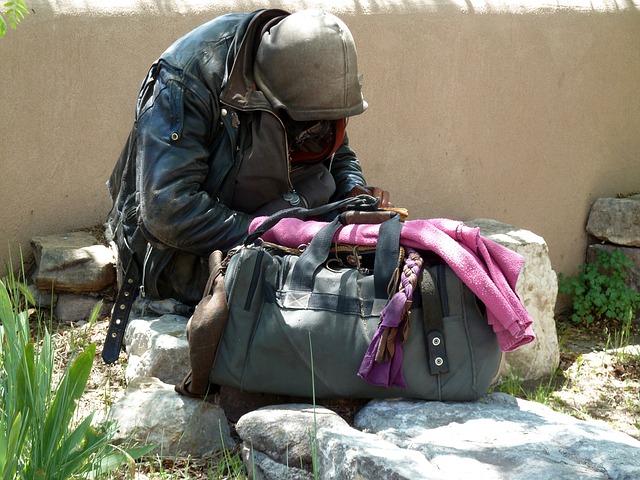 SPAIN
SPAIN
Population: 48,196,693 (2023-1Q).
Poverty: In 2020, a total of 12,501,901 people, representing 26.4% of the population residing in Spain, live below the Poverty and/or Social Exclusion threshold, that is, a quarter (1/4) of the population.
Extreme poverty: 4,498,790 people live in Spain in a situation of severe poverty in 2020.
Working poverty: There are almost 2.5 million poor workers who, despite being employed, do not make ends meet 2021
Hunger queues: More than 1.3 million people resort to the 'hunger lines' in 2022.
Homeless: In Spain there are some 40,000 homeless people (data from diocesan Caritas), but the number of places to spend the night in shelters and in foster places only reach half.
FRANCE
Population: 67,407,241 (2021).
Poverty: In France, a person is considered poor if their monthly income is less than 1,063 euros per month in 2020, 9.3 million people live below this poverty line (INSEE).
Extreme poverty: Some 1.9 million people in France suffer "great poverty", that is, they live on less than 930 euros per month for a single person, and at the same time suffer many "material and social deprivations" (INSEE 2021).
Child poverty: 20.2% of those under 18 years of age live below the poverty line in 2019. (INSEE).
Working poverty: If we set the poverty line at 60% of the average standard of living (1,102 euros per month), there are 2.1 million people who are employed, but have a standard of living below the poverty line. (INSEE 2019).
Hunger queues: In 2020, in France, between 5 and 7 million people needed to go to food distribution centers. (Secours Catholique-Caritas France).
Homeless: France has almost 300,000 homeless people in 2020. There are currently 145,000 emergency accommodation places open all year. 535 people died in the streets. It is estimated that there are 4 million people who live by force in the home of a third party, or in places that cannot pay the rent, or places without amenities (Abbé Pierre Foundation).
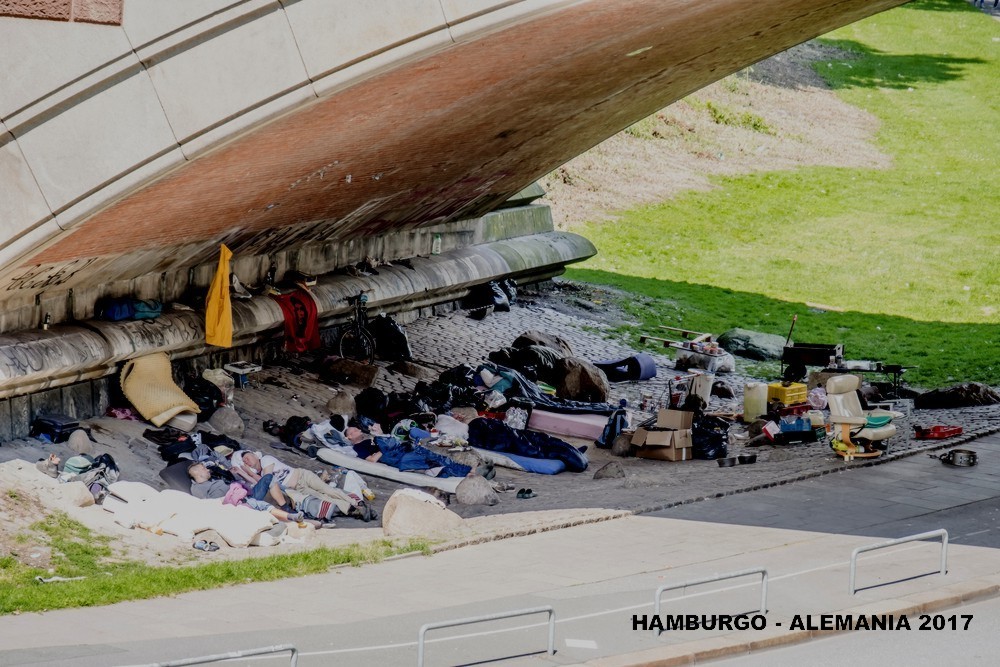 GERMANY
GERMANY
Population: 83,155,031 inhabitants in 2020.
Poverty: Poverty in Germany reached 16.6% in 2021 or 13.8 million people (der-paritaetische).
Extreme poverty: 8.3% in 2019 or 6,900,000, population receiving state social benefits (sozialpolitik).
Child poverty: Some 2.8 million children in Germany, or one in five, grow up in poverty, a 2020 Bertelsmann Foundation report showed.
Work Poverty: 8% of all employed people in the Federal Republic received a salary that did not allow them to get out of poverty. For singles this meant an income of less than 1,176 euros per month, for couples with two children the poverty line was 2.469 euros per month (Federal Statistics Office 2021).
Hunger queues: Around 1.6 million families are receiving food in the so-called Tafel (food bank in 2022).
Homeless people: In 2020, 417,000 homeless people lived in Germany, including 161,000 recognized refugees. Of the remaining 256,000 people, some 45,000 people live "on the street", without a roof.
RUSSIA
Population: Estimate (2022) 145,478,097 hab.
Poverty: 11% According to Rosstat in 2022 there were 16 million people.
Poverty level: The poverty line is calculated at 11,970 rubles or €138/month. (Rosstat 2022).
Homeless people: there are no exact statistics on the total number of homeless people in Russia; current estimates range from 4.5 million (according to old data) to more than 20 million people. (En.ru 2021).
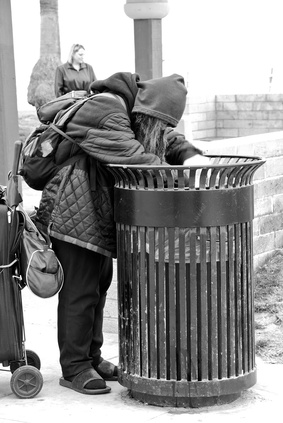 UNITED
KINGDOM
UNITED
KINGDOM
Population: 67,215,293 hab. in 2020
Poverty: 15 million poor, the pandemic has plunged 700,000 more into poverty according to legatium institute 2021.
Extreme poverty: a total of 9.7 million adults suffered from food insecurity in September 2022, reports the Food Foundation.
Child poverty: According to the CPAG, around 3.9 million children lived in poverty in the UK between 2020 and 2021, a figure that is equivalent to 27 per cent of all children in the country.
Poverty Working: 8 out of 10 people who receive state aid have a job (legatium institute 2021).
Hunger queues: There are 2,200 food banks used by 3.1 million people in 2021 (Legatium Institute).
Homeless people: More than 274,000 people are homeless in England in 2021, including 126,000 children, according to new research published today by Shelter.
ITALY
Population: Census (2021) 60,257,566.
Poverty: Italy closed 2020 with 20% of its inhabitants at risk of poverty, 11,907,000 people (macro data).
Poverty level: In 2020, the poverty line in Italy was $12,381 per person (macro data).
Extreme poverty: According to the study carried out by the Italian National Statistical Institute, almost 5.6 million people, equivalent to 9.9% of the country's population, live below the absolute poverty line in 2020. (ISTAT).
Child poverty: Those under 18 years of age have the highest poverty risk rate, with 25.1% (macro data).
Working poverty: Eurostat points out that 11.8% of Italian workers were in poverty in 2019.
Homeless people: in the 2021 ISTAT census, it is estimated that there are around 500,000 personas sin hogar.
AMERICA
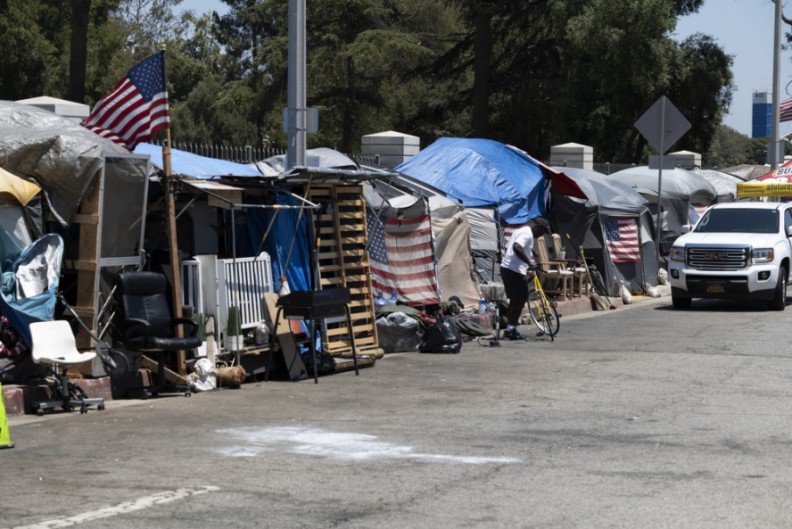 USA
USA
Population: 332,915,073 in 2021.
Poverty: The official poverty rate in 2021 was 11.6%, with 37.9 million (US Census Bureau). According to the OECD, 17.80% or 59.2 million.
Extreme poverty: 5.3% of the population, or 17.3 million people, live in extreme poverty, with incomes below 50% of their poverty lines. (US Census Bureau 2019).
Child poverty: 12.5 million in 2022 (Columbia University).
Working Poverty: As of December 2020, 53.9 percent of working-age Americans did not have full-time, living-wage jobs. Half of American workers have to fight for second and third jobs. (Ludwig Institute).
Hunger queues: Since the start of the pandemic, some 60 million people have accessed the charitable food system in the United States. (Feeding America 2021).
Homeless: 600,000 citizens are homeless in the US in 2021. Approximately 13,000 homeless people die in the US each year (36 per day). The average life expectancy of these people is only 50 years.
LATIN AMERICA
Population: 667,000,000 in 2021.
Poverty: 32.1% or 201 million in 2021 (ECLAC).
Extreme poverty: 86 million in 2021 (ECLAC).
Child poverty: 46% or 87 million children in 2020 (UNICEF).
Working poverty: it is estimated that working poverty increased by 5 million people in 2020, from 23 million to 28 million, of whom almost 9 million are in conditions of extreme poverty (OIT).
Homeless: More than 60 million live in inadequate housing, built with precarious materials and lack basic services. In turn, it is estimated that the housing deficit affects 100 million people, according to the Inter-American Development Bank (IDB 2021).
The rich: The fortune of the 73 billionaires in Latin America increased by 48.2 billion dollars since the start of the pandemic (OXFAN 2020).
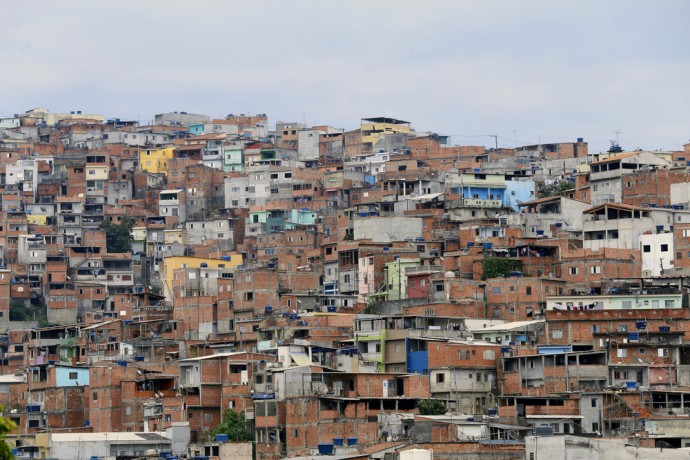 GUATEMALA
GUATEMALA
Population: Census (2022) 18,607,184 inhab.
Poverty: 52.4% in 2020 (World Bank estimates).
Extreme poverty: In 2020 around 19% (ECLAC).
Child Poverty: Chronic child malnutrition (and stunting) affects 47% of all children under five in 2020 (World Bank).
Working poverty: In Guatemala, close to the entire employed population (75%) has an informal job (ILO 2019).
Homeless: Homelessness in Guatemala affects half of the country's population (borgenproject 2020).
BRAZIL
Population: 218,689,757 inhabitants estimate (2023).
Poverty: The number of people living in poverty in Brazil reached 62.5 million inhabitants in 2021, equivalent to 29.4% of the population. (IBGE 2022).
Extreme poverty: People in extreme poverty reached 17.9 million Brazilians in 2021, 8.4% of the population. (IBGE 2022).
Child poverty: 45% of children in Brazil live below the poverty line in 2021. (PUCRS Data Social 2022).
Hunger: Some 33 million Brazilians are hungry, according to official data, it is an increase of 14 million people compared to the last report made in 2020, representing a growth of 7.2%. (France24 2022).
Homeless: In the last decade, the number of Brazilians who have been forced to live on the street grew by 139%. In 2012, the tropical country had 92,550 homeless people; in 2020 there were already 222,000. (France24 2022).
 HONDURAS
HONDURAS
Population: 9,588,474 hab. (2022 Census).
Poverty: 73.6 percent of Hondurans are poor. (INE 2022).
Extreme poverty: 53.7 percent live in extreme poverty (INE 2022).
Child poverty: In Honduras it reached 77 percent in the year 2021. (Casa Alianza de Honduras).
Working poverty: In 2020, 81.4% of Hondurans were unemployed or underemployed, indicated ASJ's principal investigator.
Homeless: One and a half million people are homeless in Honduras (OnceNoticias.hn 2017).
ARGENTINA
Population: 46,044,703 hab. (2022 Census).
Poverty: Monetary poverty reaches 43.1% of the population and affects more than 18 million Argentines. (UCA 2022).
Extreme poverty: It reaches 8.1% or 3,700,000 people. (UCA 2022).
Child poverty: It reaches 54.3% and affects 5.9 million children under 14 years of age. (INDEC 2021).
Working poverty: 2 million or 17.7% of registered employees are poor, because even receiving a salary they have income below the poverty line. (INDEC 2022).
Homeless people: Although there are no official records, social organizations estimate that nationwide there are some 100,000 people wandering on public roads. (Resumenlatinoamericano.org 2022).
PERU
Population: 33,396,698 Estimate (2022).
Poverty: By 2022, around 11.4 million Peruvians are in a situation of vulnerability, which is equivalent to 34.6% of the population.
Extreme poverty: It reached 4.1% of the population or 1,369,999 inhabitants. in 2021. (INEI).
Child poverty: Poverty in 2020 in children and adolescents reached 39.9 percent or 4 million poor children. 4 out of 10 children are poor and 1 out of 10 is in extreme poverty. (UNICEF-PERU).
Child labor: There are 870,000 children nationwide in 2020, some 210,000 more than in 2019 (CESIP).
Working poverty: Only 15% of those surveyed indicate that they have sufficient economic income, 32% indicate that their income is not enough and they have difficulties, and 15% indicate that it is not enough and they have great difficulties. (PERU-OXFAM 2022).
Homeless: It is estimated that only in Metropolitan Lima there are more than 3,000 people living on the street. (House of All 2020).
ASIA
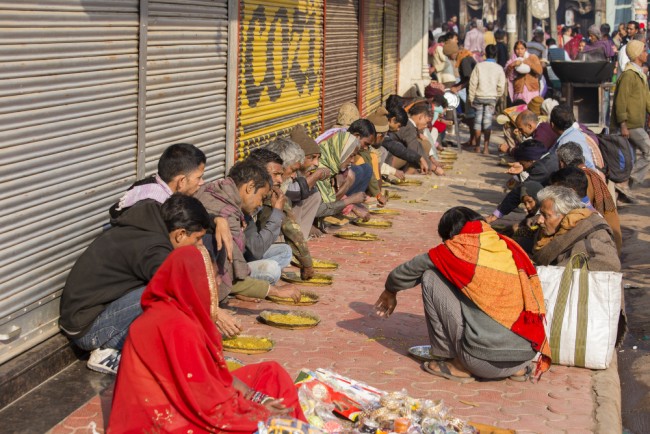 INDIA
INDIA
Population: 1,428,627,700 hab. (Estimate 2023).
Poverty: India has lifted 415 million people out of poverty in 15 years, but still has 228.9 million people living below the poverty line (UNDP and OPHI 2022). One in six people in India is Dalit, about 230 million people. Most live in extreme poverty. 48% of Dalit children show signs of malnutrition and 72% suffer from anemia. (Help in Action 2019).
Extreme poverty: 129 million Indians living in extreme poverty (World Bank 2019).
Child poverty: In India there are 97 million poor children, which means that one in five children (21.8% of the total). (UNDP and OPHI 2021). It is estimated that 18 million children live on the streets (Homes 2021).
Child labor: More than 10 million children between the ages of 5 and 14 work in India, in the fields or in factories, cleaning restaurant tables or shining shoes. (Bachpan Bachao Andolan 2020).
Working poverty: Some 62 million workers in India earn less than 176 rupees, less than 2.2 euros a day, the minimum wage set by the country. (ILO 2018).
Homeless: In India, there are an estimated 1.8 million homeless people, of whom 52% live in cities. Another 73 million families live in precarious housing (IGH, 2018; Habitat, 2019).
BANGLADESH
Population: 172,954,320 inhabitants. (2023 estimate).
Poverty: The poverty rate in the country before the coronavirus was 21%, after the pandemic it rose to 41% or about 70 million inhabitants. (AsiaNew 2022).
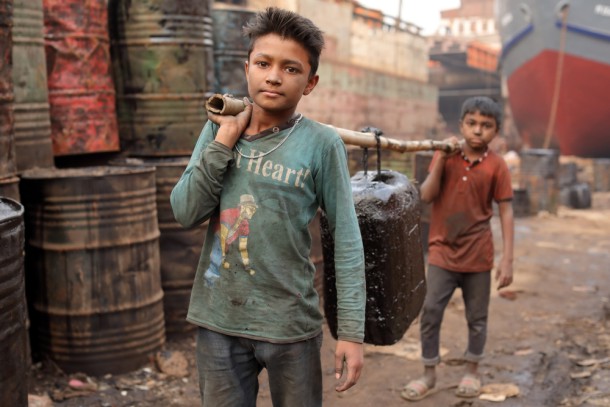 Extreme poverty: 10% of the
population still lives in conditions of extreme poverty. (World Food Program
2021).
Extreme poverty: 10% of the
population still lives in conditions of extreme poverty. (World Food Program
2021).
Child Poverty: The 2013 Bangladesh National Child Labor Survey estimated that there are 3.45 million child laborers in Bangladesh, including 1.28 million in hazardous work. The majority of working children (94.85%) perform work in the so-called informal economy, that is, work without a contract and payments that are not reflected anywhere, known as black or B payments. (Educo 2022) .
Working poverty: 80% of those who have a job subsist on less than two dollars a day. (Bangladesh Shishu Adhikar Forum 2015).
Homeless: 5 million people live without housing and 124 million live in mud houses and slums. (borgenproject.org 2020).
PHILIPPINES
Population: 117,337,370 hab. (2023 estimate).
Poverty: According to the Social Weather Stations (SWS) survey, poverty is a condition affecting 43% of Filipino households by 2022.
Extreme poverty: The Brookings Institution estimated that 10 million Filipinos will be living in extreme poverty by 2020.
Poverty child: There are approximately 250,000 homeless children; however, that number could be as high as 1 million. (Reuters 2018).
Homeless: There are about 4.5 million homeless people in the Philippines. (Reuters 2018).
IRAN
Population: 89,172,770 hab. (Estimate 2023).
Poverty: Almost half of Iranian households live below the poverty line. (Public 2022).
Extreme poverty: 30% of the population of Iran lives in absolute poverty. (ISNA State Agency 2021).
Child Poverty: 80% of Iranian children work on the streets to help their impoverished families. (ISNA State Agency 2021).
Homeless: The latest official statistics show that 19 million homeless Iranians live in slums on the outskirts of major cities. (Ministry of Roads and Urban Planning 2018).
AFRICA
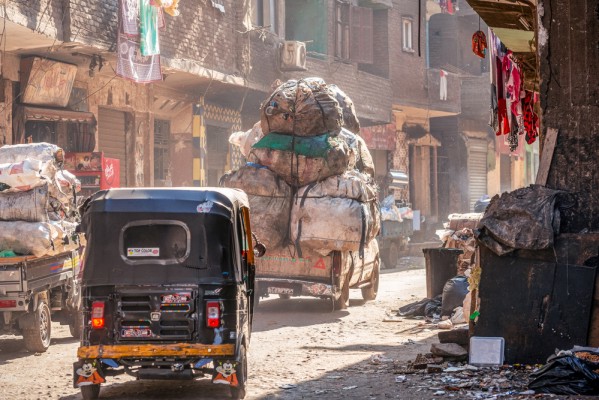 EGYPT
EGYPT
Population: 112,716,600 hab. (2023 estimate).
Poverty: 30 million people live below the national poverty line. (World Food Program 2023).
Extreme poverty: 4 million are in a situation of extreme poverty. (World Food Program 2023).
Child poverty: 10 million children throughout the country do not have access to drinking water, do not have an education or live in unsanitary conditions in their homes, among other deficiencies. (CAPMAS 2017).
Homeless: The Ministry of Social Solidarity announced in 2019 that there are 12 million homeless people in Egypt, including 3 million children.
MOROCCO
Population: 37,840,052 hab. (2023 estimate).
Poverty: In 2019, the World Bank estimated that 9 million Moroccans lived below the poverty line (79.4% came from the rural world). In 2021, as a consequence of the pandemic, the poverty rate will have increased considerably.
Extreme poverty: 1.6 million people in a situation of absolute poverty, according to a study by the official High Commissioner of the 2016 Plan.
Child poverty: 148,000 minors between the ages of 7 and 17, out of a total of 7.49 million, work in Morocco , according to the Moroccan organization Alto Comisariado del Plan (2022).
Homeless: 700,000 Moroccan citizens are currently struggling with homelessness. (Borgenproject.org 2020).
Note.- The purpose of this article is to publicly denounce the abuses and inhumane treatment that these sectors of the population have without profit. If any of the named sources of information do not wish to be included in this information, please let us know by sending an email to Contact.
